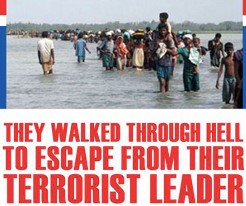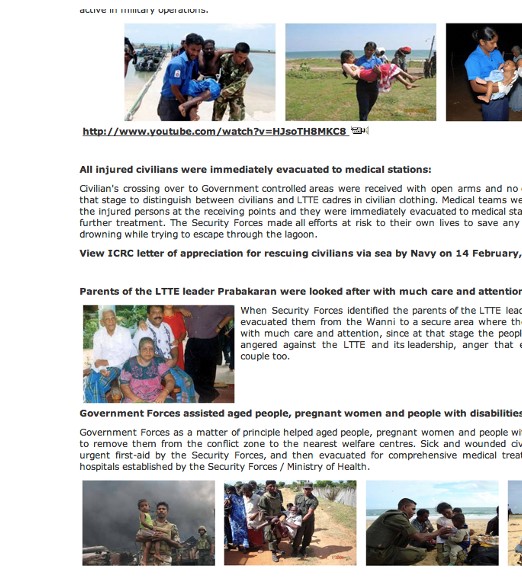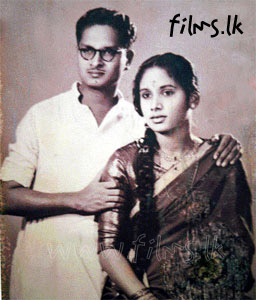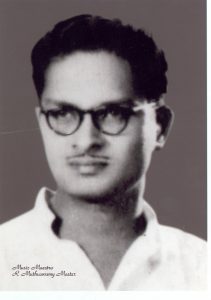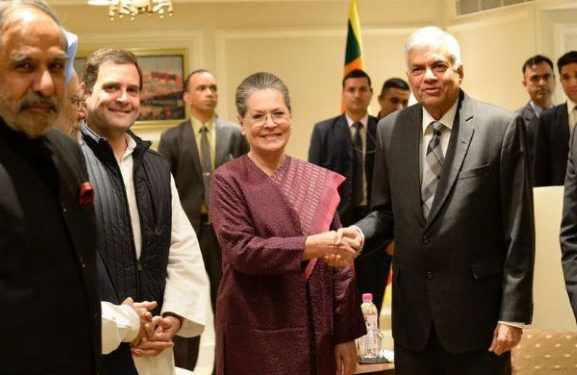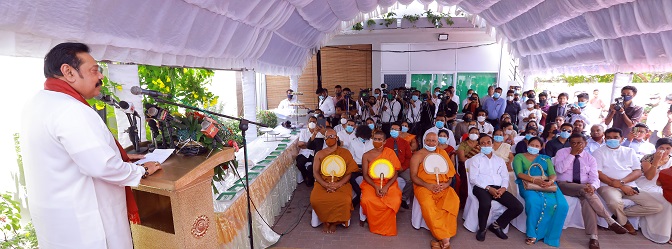KAMALIKA PIERIS
First person accounts of the second JVP insurgency
have been given in autobiographies of Drs B.J.C. Perera, Sarath Weerasinghe and W.A. Wiswa
Warnapala. They have spoken of their experiences with the JVP in their places
of work.
B.J.C. Perera was Consultant Pediatrician in Kurunegala
in 1988. In Kurunegala there was a lot
of public support for JVP and people in the area were openly sympathetic to the
cause said BJC. JVP were in almost total control. Hospital had JVP sympathizers on the staff.
Two of his House officers were also JVP.
They tried to disrupt the working of the hospital. ‘’But I did not allow
them to disrupt ward activities,’ Said BJC.
The hospital
was not closed for even one day. Kurunegala was one of the few hospitals which
functioned normally, he said. Kurunegala child Immunization clinic was over
loaded, with about 300 children brought from outstation in lorries and cars,
since the other clinics were not working. ‘We managed to immunize them all,’
said BJC. This service was provided for several weeks.
JVP was watching him and liked his concern for
his patients. They sent him a message that since he had a baby at home, he
could use the electric lights in the house. JVP had ordered the public not to put on
electric lights. BJC refused, saying he
would be labeled a JVP sympathizer, so they told him to use thick curtains and
only a couple of lights.
Towards
the end of the insurgency, both army and JVP were active in Kurunegala. An army
officer came to the hospital, said BJC. He spoke separately to doctors, and
asked them to continue the good work, told nurses, separately that any
saboteurs would be treated like insurgents, told laborers that he knewexactly who JVP were. He will kill the
two of them and hang them for all to see at the entrance to the hospital. He
will personally shoot them through the heads, said the army officer.
In 1988 JVP made final error in Kurunegala,
said BJC. They had dragged out a supporter of the government His children had come
running and hugged the father. JVP killed the children as well. This disgusted
the public who went to the police and army and told them details of JVP
activity in the entire Kurunegala region. The force and police came out at
night, rounded up the JVP. Nothing was
heard of them after that. They were
apparently eliminated and burnt in the jungles and forest areas of
Kurunegala. The insurgency collapsed virtually overnight in 1989 in Kurunegala,
concluded BJC Perera.
Dr. Sarath Edirisinghe, who taught at the Medical Faculty,
Peradeniya, spoke of his encounters with the JVP in the University in the Bheeshanaya
period. One day a group of medical
students who were JVP informed us lecturers that they were going to have a
meeting in Physiology Theater and all the staff must attend. We all trooped in
there, a medical student activist spoke, and scolded us for not being receptive
to the vast changes taking place. We must respond to the youth uprising. They
said, among other things, , that they had to
right to stop and check any vehicle passing Wijewardana. We were not
allowed to voice our views, said Sarath.
On one occasion
Sarath watched the captive medical staff of Peradeniya Teaching Hospital,
carrying placards against the IPKF, herded along toward Peradeniya road junction. A consultant had told him
later that they had been taken to Peradeniya Bo tree bus stop, given paste and
told to paste posters on the buses that stopped there.
Once there
was a huge commotion at the turn off to Wijewardana Hall. There was a huge
crowd and much chaos. Sarath saw a man
tied to a tree. Someone started beating him. He
was later taken away. We heard later
that he was the driver of a passing vehicle owned by a UNP MP. He was found
murdered in a nearby quarry.
The Meewatura
University house complex, where Sarath lived, had been visited by JVP and
identity cards confiscated. Electric
transformers in the area had been bombed or vandalized. On dark days” the
residents did not switch on the lights. Sarath was pulled up for putting on
lights when all round it was dark. These
JVP were definitely University students, said Sarath.
JVP said they
were going to send him a set of instructions to be conveyed to the rest of the
houses. Sarath had said how to read instructions when there are no lights. He
was told that around 3 am, instructions would be pushed through the door and to
comply. Use torch to read it. However, since they had a baby, he was told to
have a 15 or 25 watt bulb in a back room.
The document
arrived. They were told to display a large placard saying that IPKF must leave
Sri Lanka, also hang a black flag. Their activities would-be closely watched
throughout the day. At dawn Sarath saw a
row of University houses with black flags. Some had torn umbrellas to get the
black cloth.
Then the army
came. Sarath and others were warned in time, they pulled the black flags down. An army jeep
came, with two rows of unsmiling soldiers
scrutinizing the houses, When the army left the academics put back the placard
and flag. Throughout the day, there were young men on motorcycles checking our
houses.
Then JVP
bombed the Water Purification plant, nearby, which meant no water for the
houses. The Vice Chancellor appealed to
JVP by poster to get the plant working.
JVP complied. The ‘Reply’ poster came, saying plant will be
repaired and water will be issued for two hours a day.
It was well known that these University campaigns
were carried out by IUSF and the Deshapremi Sishya Viyapraya. The leading activists were hardcore JVP
members, and they included final year students and university staff. There was also a group of third-liners, who were clearly followers not leaders. Sarath
met a few of them.
One day, Sarath
found that there was no one in the Medical Faculty and he went along to the Dean’s room, where he found Dean
and the Senior Assistant Registrar, Miss Jayasuriya. While he was there, the door opened with a bang and a well dressed,
bearded young man came in and wanted to know why the Faculty was open, it was a
hartal day. Miss Jayasuriya had shouted back and said the man had no business
entering the Dean’s office and ordered him to leave immediately. The man said
something threatening but left the office. The man was a technical officer in
the Medical Faculty, said Miss Jayasuriya.
After several
murders had taken place at Peradeniya campus, a dozen senior academics, from
the Medical Faculty, led by Prof Ralph Panabokke had gone to see Vice
Chancellor Arjuna Aluwihare, by appointment. There
were three student activists there, recalled Sarath. We were introduced to the
students.
Prof. Panabokke said his say which was
translated to the students, who said very eloquently in Sinhala that there was
a liberation movement taking place and we should recognize the fact and as
academics we should extend our support. Panabokke said that murders by
University students should be stopped.
The students looked agitated, they had a short discussion among
themselves and the leader blurted out that they had no control over these
activities.
Sarath and
his family then went to Nugegoda, where again they met the JVP. Sarath’s wife, Jayanthi visited an uncle who
was a retired army man. when she knocked on the door, a young man holding a gun pulled her into
the house. Jayanthi, who was a lecturer in the University, guessed that these
were probably University students. She
shouted at the gang telling them she was a University don. She asked them to
leave the house immediately. They had a whispered conversation and left,
warning her not to leave for one hour and not to get the police. They had cut
the telephone wires beforehand. They had vanished into thin air, there was no
sound of a motor cycle.
Sarath and
his family returned to Peradeniya . A
Senior Assistant Registrar had been killed near Senate House. In retaliation,
around ten youths were killed and their severed heads placed round the Alwis
pond. ‘One can imagine how brutal the government backed counter terrorist
activities were at the time.’ said Sarath.
Towards the
end, there was fear, panic and danger everywhere. Militant students patrolled
the area on wheels and on foot. They were checking vehicles. They expected a
showdown with the government and counter preparation were being readied by them.
The showdown came
soon after. In the biting pre-dawn, Sarath and other academics living in Meewatura heard students in Hilda Obeyesekera Hall, ( then a
male student hall) calling out names of
lecturers and begging those lecturers to come and rescue them as they were surrounded by the
army.
Instead of
running to the rescue, the lecturers in the Meewatura houses were all in their
back gardens watching. We did not see any army activity until a helicopter came
by. The cries of students rounded up by the armed forces could be heard, then
there was silence, said Sarath.
Helicopters
kept swooping down on the Halls of residence
till mid day. There was also bus after bus transporting students out of the
campus. As they went past Meewatura to Gampola
villagers hooted, some shouted don’t come back.” The Bheeshanaya was
blamed on University students and
the surrounding villages were
relieved to see the student evicted from campus. The Campus was closed, concluded Sarath.
W.A.Wiswa
Warnapala, was SLFP organizer for Kegalle in the 1980s. In 1987, party activity
in Kegalle was done amidst JVP terror, he said. JVP mounted a campaign of
violence in Kegalle to prevent a free
and fair election. They wanted to prevent the voters from voting also from
participating in election activity.
The SLFP organizers were provided with guns and were
expected to arrange for their own security. JVP threatened Wiswa with death and he was prevented from going to certain
villages by blocking the road to these places.
There was a large spate of political violence throughout the country at the time.
Wiswa
was teaching political science at University of Peradeniya , during the Bheeshanaya period. The
violence inside the University
particularly University of
Peradeniya was such that the University
could not control it, said Wiswa. No one
was safe inside the campus. The Inter
University Student Federation
formed Action Committees and
these committees were behind the violence.
The
frightened University authorities gave recognition to the Action Committee, in
order to avoid open confrontation and prevent destruction of life and property.
The Action Committee turned itself into
a parallel administration making use of
the University administration and issuing orders to University officials. There was
sporadic stoppage and boycott of lectures. No Department could function steadily.
Academic progammes came to a standstill,
said Wiswa. ‘Palamuwa mawbima devenuva upadhiya’ said the slogan.
Wiswa
observed that the JVP leaders in the
University came not from Arts faculty, but from science,
engineering and medicine. This was
strange because they were sure of getting jobs and rising in
life, but these students, unlike in the past, came from different
social backgrounds. The undergrad community of the 80s was entirely different to
that of the 50s, they were more militant and aggressive. Wiswa was a strong critic of the JVP. He got a
threat on his life.
Violence,
threats and killings were the order of the day inside Peradeniya campus. Nobody
was safe inside. Any trivial matter was enough for the students to
indulge in violence and they were armed with lethal weapons, said Wiswa.
A Senior
Assistant Registrar was shot at the entrance to Senate House at 12 noon by a
JVP who came on a push bike. Victim died leaning on a car. Culprit escaped and
no attempt was made to apprehend him. .
On another
occasion, there were ten bodies in front of the arts theatre. it was rumored that this was done by the
state, which shot them one by one as a message to the JVP. this murderous act was a part of the reprisals of the state.
Those responsible for this terrible event blocked the roads so they could
commit the crime with impunity . This act devastated the academic community,
said Wiswa.
One activity
of these students was to watch the comings and goings of the academics. When
Wiswa’s brother in law, a Brigadier in the army
visited Wiswa, the JVP ‘had the
audacity to come and question me as to
why there was an army visit,’ said
Wiswa. When B.S. Wijeweera, one of his post graduate
students had visited Wiswa at home, JVP
thought that Rohana Wijeweera
had visited .
Osmund Jayaratne, a lecturer in Physics said
in his autobiography, that he was informed, after he left Peradeniya that the
academics living in Mahakanda had put up a notice saying ‘Osmund Jayaratne no
longer lives in this housing scheme’. ( continued)

